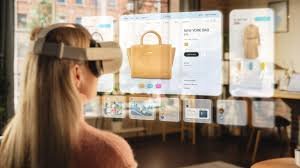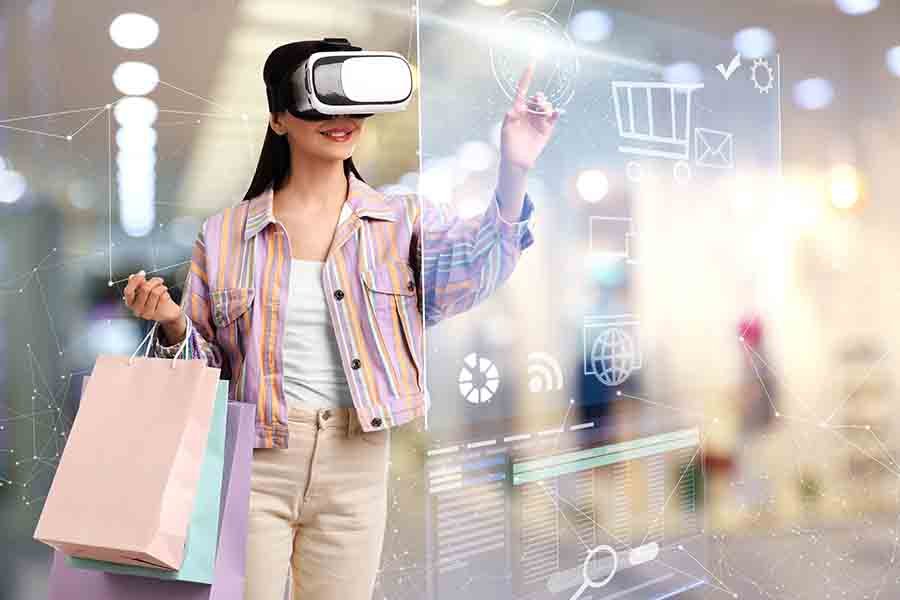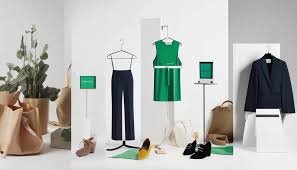Virtual reality (VR) has transformed many industries, and shopping is no exception. With VR technology becoming more advanced and accessible, the way we shop is rapidly changing. Imagine trying on clothes, testing gadgets, or browsing furniture from the comfort of your home. Virtual reality shopping offers a new, immersive experience that promises to reshape the retail world. In this post, we’ll explore how VR is transforming shopping, its benefits, and what the future holds for virtual reality in retail.

Immersive Shopping Experience
Virtual reality offers a fully immersive shopping experience that traditional online shopping cannot match. Instead of scrolling through images on a website, shoppers can step into a virtual store, interact with products, and explore items in a 3D environment. This allows consumers to view products from multiple angles, examine them up close, and even try them on in a virtual space. For example, VR allows customers to virtually try on clothes, shoes, or accessories without needing to visit a physical store. The immersive nature of VR makes shopping more engaging and realistic, mimicking the in-store experience without leaving home.
Personalized Shopping Experience
One of the key advantages of VR shopping is the ability to offer a highly personalized experience. With the integration of artificial intelligence (AI) and machine learning, VR platforms can analyze customer preferences, behaviors, and past purchases to tailor product recommendations. For example, a VR shopping platform might suggest clothing items based on previous purchases or a user’s style preferences. Additionally, VR can incorporate personal avatars that mimic a customer’s body type, allowing them to see how clothing will fit and look in real life. This level of personalization enhances the shopping experience and helps customers make more informed purchasing decisions.
Convenience and Accessibility
Virtual reality shopping brings unparalleled convenience and accessibility to consumers. Traditional shopping often involves time-consuming trips to the store, crowded malls, and long lines. VR shopping eliminates these challenges by allowing customers to shop from the comfort of their own homes, at any time of day or night. This is particularly beneficial for people who have limited access to physical stores, such as those living in rural areas or people with mobility challenges. Additionally, VR shopping enables customers to avoid the hassle of parking, traffic, and long queues, making it a more convenient and stress-free option.
Reducing Return Rates
One of the challenges with online shopping is the high return rates, especially for clothing and accessories. Customers often order items online, only to find that they don’t fit properly or don’t look as expected in real life. Virtual reality shopping helps reduce return rates by providing a more accurate representation of products. With VR, customers can try on items virtually, see how they look from different angles, and assess the fit before making a purchase. This can reduce the likelihood of dissatisfaction and returns, saving retailers time and money. VR allows shoppers to make better-informed choices, improving the overall shopping experience for both customers and retailers.
Virtual Try-Ons and Customization
Virtual reality enables customers to try on products in ways that go beyond traditional shopping methods. For example, makeup brands are already using VR to allow customers to try different shades of lipstick, foundation, or eyeshadow without applying any products to their skin. Similarly, eyewear companies offer virtual try-on features, allowing customers to see how different glasses frames will look on their face. In addition, VR can be used to customize products, allowing customers to personalize items like shoes, clothing, or even cars. Customers can experiment with different colors, styles, and designs, creating products that suit their individual tastes.
Integration with Augmented Reality (AR)
The future of virtual reality shopping is also intertwined with augmented reality (AR). While VR creates a fully immersive digital environment, AR overlays digital information onto the real world. For example, AR can be used to visualize how furniture will look in your living room or how a new paint color will appear on your walls. The combination of VR and AR offers even more powerful shopping tools. Shoppers could use VR to explore a store, try on clothes, and interact with products, while using AR to see how those products fit into their real-world environment. This integration enhances the shopping experience and provides a more accurate and interactive way to make purchases.
Conclusion
Virtual reality shopping is changing the way we shop by offering an immersive, convenient, and personalized experience. As the technology continues to evolve, we can expect even more innovative features, from virtual try-ons and customization to the integration of augmented reality. While VR shopping is still in its early stages, its potential to transform the retail industry is undeniable. As more consumers embrace this new shopping model, it’s clear that virtual reality will play a significant role in the future of retail, offering new opportunities for both customers and businesses alike.











